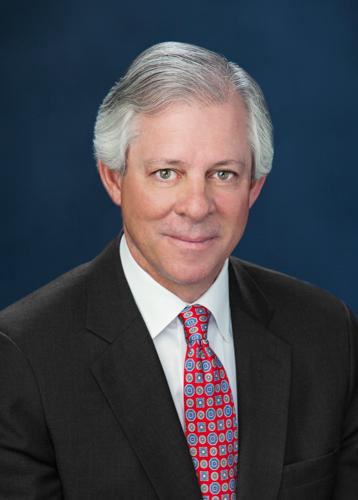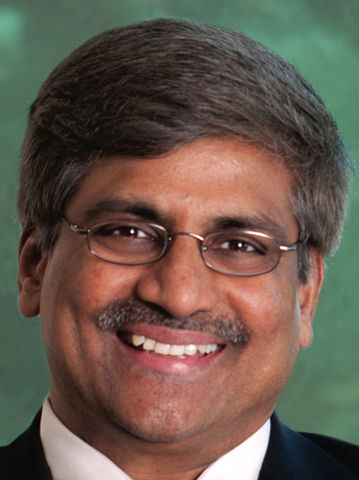The University of Arizona’s next president will likely have to prove himself to many of the school’s professors.
Faculty members who expressed opinions had a “sizable preference” for the presidential finalist who didn’t get the job, public records show.
Professors favored ASU executive Sethuraman “Panch” Panchanathan. Instead, the Arizona Board of Regents chose Dr. Robert C. Robbins, CEO of Houston-based Texas Medical Center, to replace outgoing UA President Ann Weaver Hart.
The board is expected to announce the terms and vote on Robbins’ contract at its April 7 meeting at the UA.
The faculty’s preference for Panchanathan was not shared by a handful of UA donors who wrote to regents to express their views. They wanted Robbins to get the job, the records show.
The Arizona Daily Star filed a public-records request March 9 seeking documentation of any feedback regents received on the presidential search. Regents’ headquarters released the records Friday.
The emails from donors and faculty members provide the only public glimpse into the finalists’ perceived strengths and weaknesses in a presidential search some have criticized as lacking in transparency.
Regents received a total of 10 communications.
Three were from UA donors, who all favored hiring Robbins, the former head of cardiology at Stanford University School of Medicine, one of the highest-ranked in the country, before he took the Texas job in 2012.
“I strongly endorse Dr. Robbins,” wrote donor Richard Fink, who said the UA “is at a critical time” in its history.
“The little I know of him I believe he brings all the skills and background” the university needs, Fink wrote. The last time regents hired a UA president, the result “did not prove to all that was envisioned,” he said.
Donor Rica Spivack called both finalists “excellent” in her email to regents but said she “would be more comfortable with Dr. Robbins.
“The university has moved into the world of business as well as education and my feeling is that this candidate’s experience would better serve our school,” she wrote.
One of the lengthiest emails came from Lynn Nadel, chair of the UA faculty and a member of the presidential search committee.
Nadel said he received a “fair number” of responses when he asked fellow professors for feedback.
Both finalists “were viewed positively by almost all commenters as individuals of significant accomplishment,” Nadel wrote in an email summary of faculty sentiment.
“Amongst those who expressed one, there was a sizable preference for Dr. Panchanathan reflecting a number of things, including his proven commitment to Arizona, his long history in an academic setting, his broad skill set as it relates to innovation and his personality.
“Many of the commenters had direct experience with Panch, every single one of whom was struck by his qualities as a person. Words like open-minded and team-spirited were used frequently. His commitment to diversity and his global footprint were also noted,” he continued.
Nadel said he shared the view that Panchanathan was the stronger of two impressive finalists.
“I believe he would bring a new level of excitement to the UA,” Nadel wrote. “I could see him leading the UA successfully for many years to come.”
Regent Rick Myers of Tucson, who was instrumental in bringing Hart to the UA in 2012, personally sought out of the views of a particular UA faculty member, John Hildebrand, a regents professor in the UA Department of Neuroscience, the records show.
Hildebrand didn’t endorse either finalist but offered pros and cons on each based on discussions with UA colleagues, ASU professors and feedback from a department head at Robbins’ current employer in Texas.
Robbins “seems to be highly regarded” at his current job, Hildebrand reported. “He has taken many steps to enhance collaboration among institutions in the Texas Medical Center.”
Panchanathan, executive vice president and chief research and innovation officer at ASU, was said to be the virtual “second-in-command” to ASU President Michael Crow, although not as “top-down” as Crow in his management style.
An ASU professor described Panchanathan as approachable and sincere, someone “with the experience and vision to be a good president,” Hildebrand wrote.
He said the UA faculty members he spoke with had some concerns with both finalists.
A “considerable concern” about Panchanathan was “that he might be inclined to follow the leadership style of his ‘mentor’ at ASU, Michael Crow.
“Of course, this is a kind of ‘guilt by association’ — we don’t know whether Panchanathan would emulate (Crow) or not,” he added.
Hildebrand said the main concern with Robbins is that he “appears to have very little experience with the nonmedical part of universities,” causing some to worry he would focus on the UA’s medical enterprise to the detriment of other parts of the university.
“There is a feeling around the UA that the medical schools have ‘sucked up the oxygen’ through the last two presidencies, at the peril of the core university,” he wrote.
“We see no reason to be optimistic that perceived neglect of the core university would improve under the leadership of a person whose whole career has focused on medicine.”
Robbins, in a statement to the Star sent through the regents’ office, said the following in response to the critiques:
“I look forward to working with all of the faculty and senior leadership at the University of Arizona. Indeed, each department, college and school within the UA is critical to the success of the university.
“I hope that the faculty and the leadership teams will be as eager to work with me as I am to work with them.”
Nadel, the faculty chair, told regents in his email that professors would give a warm reception to whomever they picked as the new president.
“Whoever you choose will receive a positive welcome from the faculty at the UA, given that both have a record of substantial scholarship,” Nadel wrote.
“After that it would be up to the new president to succeed by doing the right things often enough, and the wrong things as infrequently as possible.”







